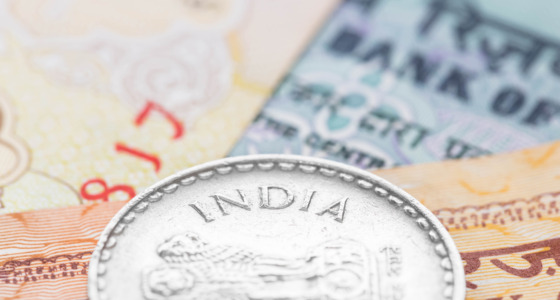

Perfect competition can be defined as a theoretical market structure that lacks monopolies. In this type of market, all businesses sell the same products, and the price is not influenced by market share. There are no barriers to entry or exit, customers have complete information, and companies cannot set prices. However, perfect competition encompasses various other factors that have significant implications for a perfect market.
What is Perfect Competition?
Perfect competition is an ideological system based on the fundamentals of a perfectly competitive market. It serves as a valuable model for understanding how supply and demand impact pricing and behavior in the economy, even though it rarely exists in real markets.
A market characterized by perfect competition consists of numerous buyers and sellers, and prices are determined by supply and demand. Companies only earn enough to cover their operating costs, as excessive profits would attract new entrants who would lower revenues.
How Perfect Competition Works
Perfect competition is often used as a benchmark to compare actual market structures. Monopolies, where only one company provides a product or service and can set prices without competition, are the opposite of perfect competition.
Under perfect competition, monopolies do not exist. Some key characteristics of perfect competition include:
- Homogeneous Goods: Every company sells the same products or commodities.
- Price Takers: Companies have no influence over market prices and must accept them as they are.
- Price Unaffected by Market Share: Changes in market share do not impact prices.
- Perfect Knowledge: Buyers have complete information about products and prices, past, present, and future.
- Mobility of Resources: Labor and capital resources can freely move.
- No Barriers to Entry or Exit: Companies can enter or leave the market without any charges.
In a perfectly competitive market, the demand curve for products and services slopes downward. However, no individual company has the power to control the rate at which it sells its goods. Therefore, firms must accept the market equilibrium price and deal with fully elastic consumer demand.
The demand curve for a competitive firm in perfect competition is horizontal at the market price. This means that every unit sold will generate the same price. The marginal revenue a company receives is the absolute difference in revenue from selling an additional unit at the unchanged market price.
Characteristics of a Perfect Competition Market
The characteristics of a perfect competition market can be described through the following factors:
- Vast and Uniform
The market consists of many competitive buyers and sellers, with smaller businesses rather than large corporations. There are minimal differences in the products sold, making it challenging for consumers to differentiate based on tangible or intangible qualities.
- Unhindered Access to Information
Access to information about the industry and competitors is crucial. In some sectors, knowledge of supplier pricing, component sourcing, patents, and research projects can shape market outcomes and competitive strategies.
- Lack of Controls
In a perfect competition market, there are no government-imposed regulations or restrictions on entry or exit. Businesses can freely invest in labor, capital assets, and adjust output according to market demands.
- Affordable and Efficient Transportation
Perfect competition also requires affordable and efficient transportation. Companies do not face significant costs for product movement, which reduces item costs and shortens delivery times.
By understanding and analyzing perfect competition, we can gain insights into how markets function and the implications of different market structures.

The Contrast between Theory and Reality in Perfect Competition
Real-world competition often deviates from the ideal of perfect competition due to variations in manufacturing, marketing, and sales. For example, a small organic goods store owner can differentiate their products from competitors by heavily promoting the grains fed to the cattle that produced the dung used as fertilizer for non-GMO soybeans. This is known as product differentiation.
The first two characteristics of perfect competition, namely homogeneous goods and companies that act as price takers, are rarely found in reality. However, the ongoing global transformation in technology and commerce is increasing the availability of information and the mobility of prices, which aligns with the other two characteristics of perfect competition.
While the theoretical model of perfect competition is far from reality, it still provides valuable insights into various behaviors observed in the real world.
Barriers to Entry Prevent Perfect Competition
Significant barriers in the economy prevent the emergence of perfect competition. Many industries have entry barriers that restrict the ability of businesses to enter or exit the market. These barriers can include high initial costs, as seen in the auto production industry, or strict government regulations, as seen in the utility industry.
However, there are a few markets where consumers are constantly aware of all the options and pricing. The agricultural sector, with its numerous small producers who have little control over the prices of their goods, arguably comes closest to perfect competition.
Advantages and Disadvantages of Perfect Competition
Perfect competition represents an idealized framework for a market economy. While it provides a practical approach to understanding markets, it often deviates from the complexities of the real economy. The usefulness of the perfect competition model lies in its ability to reflect real-world circumstances to some extent.
Low-profit margins are a significant characteristic of perfect competition. With identical goods available to every consumer, they naturally seek the best deals. Businesses cannot charge higher prices for superior goods and services as a means of differentiation. For example, Apple’s devices, being more expensive than its competitors’, would struggle to survive in a perfectly competitive market.
Lack of innovation is another drawback. Businesses are motivated to innovate and create better products in order to gain a larger market share and differentiate themselves. However, in perfect competition, no company has a dominant market share, resulting in limited long-term profitability for any firm.
Another disadvantage is the apparent absence of economies of scale. Increased production capacity typically leads to lower prices for consumers and higher profit margins for businesses. However, in perfect competition, numerous small businesses competing for the same market share prevent this, keeping the average company size modest.
Can Firms Make Profits in Perfect Competition?
In markets with perfect competition, firms may achieve profits in the short term. However, the dynamics of the market neutralize the impact of these profits, moving them towards equilibrium. Competing firms, due to the lack of asymmetric information, will quickly increase production or reduce costs to align themselves with the profitable firm.
In a perfectly competitive market, a company’s average and marginal revenue are equal to the selling price of its goods. All profits and losses ultimately converge to zero as supply and demand conditions change.
Perfect Competition vs. Monopoly
Perfect competition stands in contrast to a monopoly, where one company controls the supply of a specific good. In a monopoly, customers who perceive the price as too high have no alternative but to refrain from purchasing the good.
This allows the monopolistic company to set prices that maximize its profits, rather than relying on supply and demand. Certain business models are considered natural monopolies, benefiting from a significant first-mover advantage that deters competitors from entering the market. Other monopolies may be created by the government or by cartels like OPEC.
Perfect Competition Examples
Perfect competition is a theoretical concept that does not exist in the real world. As a result, it is difficult to find real-life examples of perfect competition. However, there are some variations of it that we can observe around us. Here are some visible examples of perfectly competitive markets:
- Production
At a farmer’s market, there are many small sellers and purchasers. The products and pricing generally remain consistent across different farmer’s markets. There is little variation in how the produce is packaged or marketed, and the method of production doesn’t significantly impact the pricing. Even if one of the farms supplying commodities for the market closes, the average pricing remains unchanged.
- Supermarkets
Similarly, competing supermarkets that source their products from the same group of businesses can demonstrate characteristics of perfect competition. The products at these stores have few differences, and their prices are essentially the same. Unbranded goods, which offer cheaper alternatives to well-known brands, can also illustrate perfect competition.
- Product Knockoffs
Knockoff products often have similar prices and lack distinct features. If one company producing such a product goes out of business, another one quickly takes its place.
- Technology
The emergence of new technology sectors can resemble perfect competition to some extent. For instance, in the early stages of social media networks, there were numerous websites offering similar services. These websites, such as Asianave. om, Blackplanet. om, and Sixdegrees. om, had little market differentiation and were primarily used by young people. The low startup costs in the technology industry allow both startups and established companies to easily enter and exit these markets.
Perfect Competition in Economics
According to economic theory, perfect competition exists when all businesses sell identical goods, prices are determined solely by market forces, companies can freely enter or exit the market, consumers have perfect information, and businesses cannot set prices. This ideal market structure contrasts with imperfect competition, which better reflects the reality of most markets.
Difference Between Perfect Competition and Imperfect Competition
In reality, all markets are imperfect as they deviate from the ideal model of perfect competition. Monopolies, for example, represent an extreme form of imperfect competition, where a single company dominates the market. Imperfect competition involves businesses competing for market share, facing significant barriers to entry, and consumers lacking complete knowledge of goods or services. This environment encourages innovation and leads to the production of better goods with higher profit margins based on demand and supply factors.
The bottom line
In summary, perfect competition envisions a market where consumers have access to identical goods and information. Under perfect competition, businesses must offer the lowest possible prices to avoid being undercut by competitors. While perfect competition provides a useful framework for analyzing market dynamics and the incentives for producers to lower prices, it is important to note that it is a hypothetical concept and cannot be replicated in real-life scenarios.











